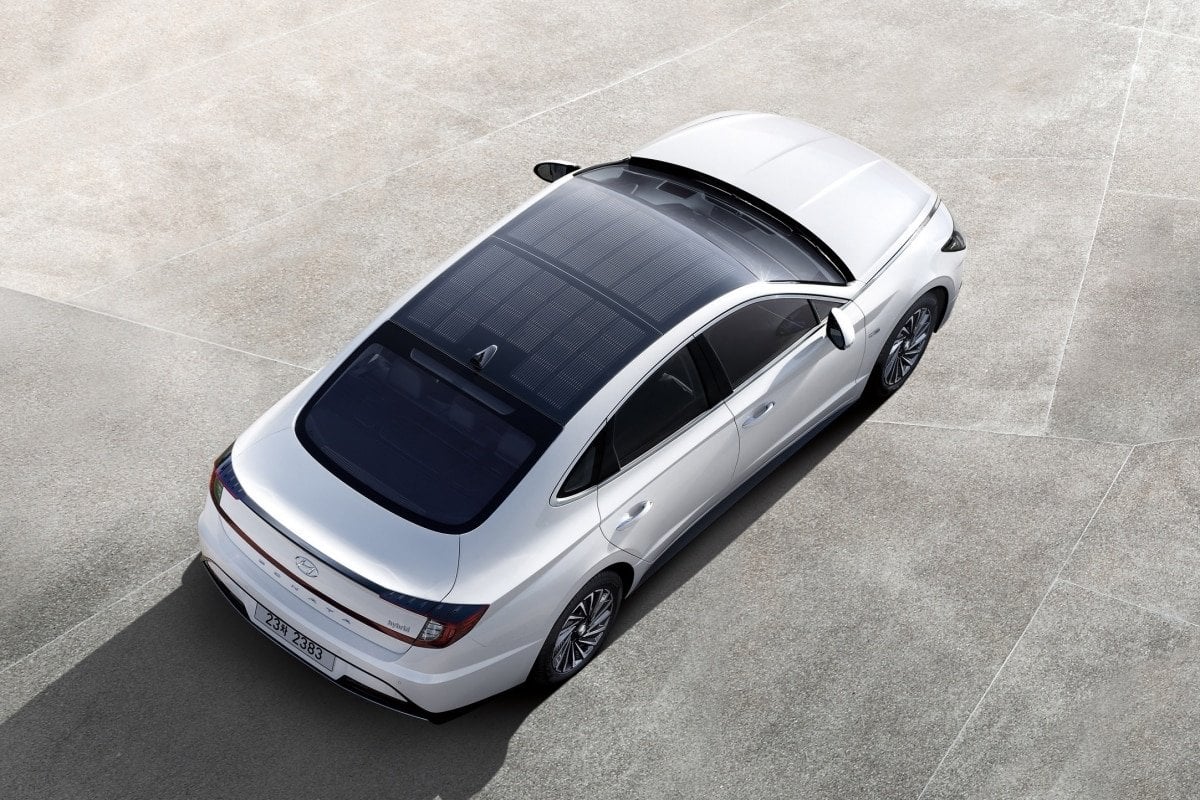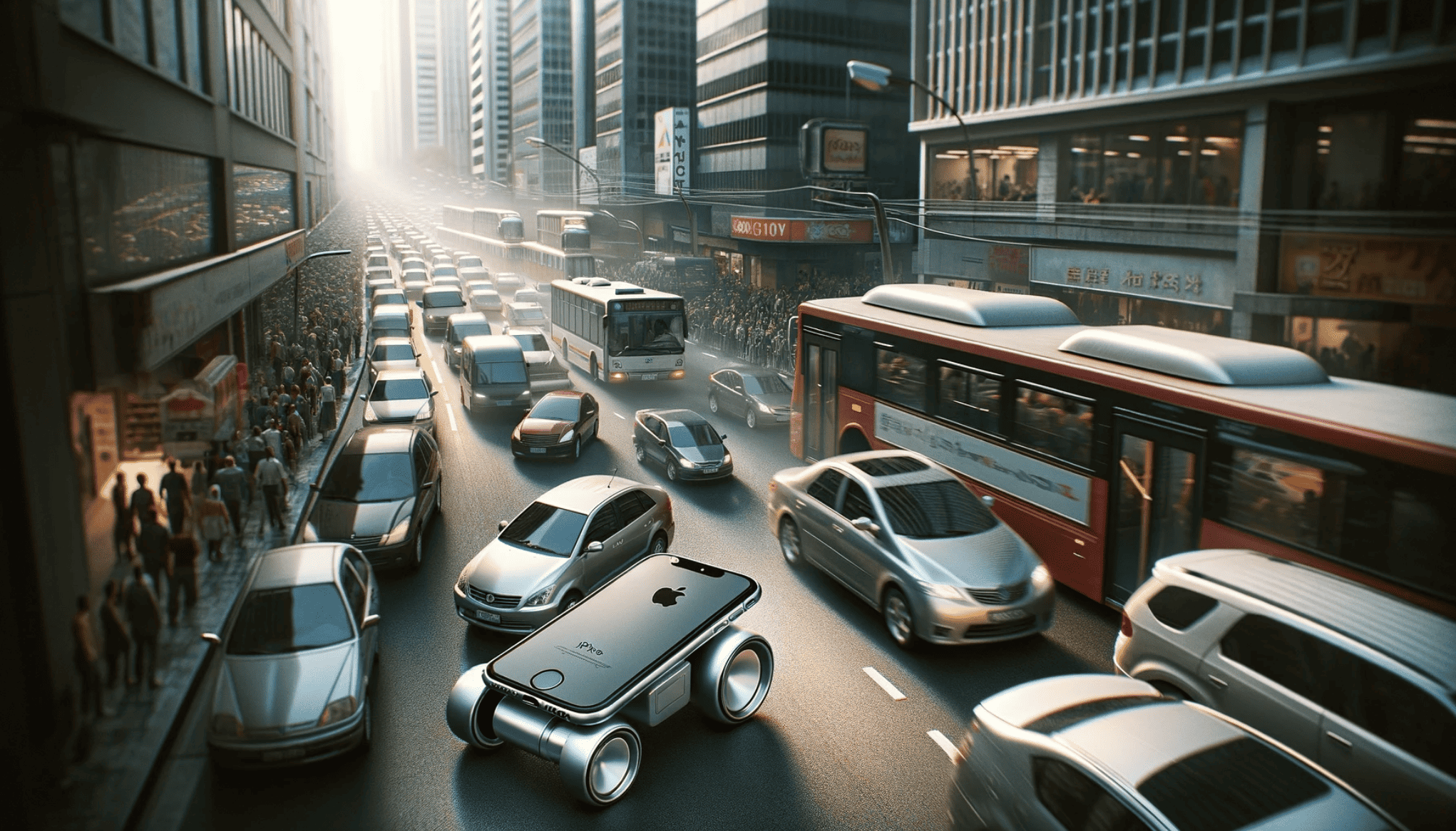
A little less than a month ago, the first prototype of the Lightyear One – the world’s first solar car – was unveiled in the Netherlands. Plans are that it will debut in 2021. However, other manufacturers have already added solar energy to their cars. But as yet, only as an additional source of energy and not as the sole source. For example, the Toyota Prius has been available with a solar roof option since 2017. Plus the Karma Revero from luxury car designer Henrik Fisker also has a solar roof with the purpose of increasing the hybrid’s electrical range. Other manufacturers are working on electric cars with integrated solar panels. Like Ford or the Munich startup Sono Motors, which plans to start the series production of the Sion by the end of 2019.
Now Korean carmaker Hyundai has also discovered solar energy for its cars. The New Sonata Hybrid has been equipped with an environmentally friendly solar roof system that allows the vehicle’s battery to be recharged while driving. As with the Toyota and Karma, the battery will discharge more slowly, the range will be extended and the CO2 balance improved.
The New Sonata Hybrid is the first Hyundai with a solar roof, but this technology will be incorporated into other models in the coming years. “This is the latest application of a smart solution from Hyundai which advances the mobility industry towards a more sustainable future,” the company states. Heui Won Yang, Senior Vice President and Head of Body Tech Unit of the Hyundai Motor Group, presented the Solar roof technology as a good example “of how Hyundai Motor is moving towards becoming a clean mobility provider. The technology allows our customers to actively tackle the emissions issue. We are striving to further expand the application of this technology beyond an eco-friendly vehicle fleet to vehicles with an internal combustion engine.”

The solar roof system of the New Sonata Hybrid is comprised of, among other things, a structure of silicon solar cells that are mounted on the roof of the car. According to Hyundai, the electricity produced through the solar roof while driving is able to charge up to 30 to 60 percent of the battery each day. With a daily charge of 6 hours, the Koreans are expecting that the annual range will be increased by 1,300 kilometers.
The system consists of a solar panel and a controller. “Electricity is produced when solar energy activates the solar panel’s surface, which converts this energy by using photons of light from the sun,” Hyundai explains. “This creates the electron-hole pairs in silicon cells, which in turn generate solar electricity.” This power is then converted to the standard voltage by the controller and stored in the battery.
In addition to the solar roof, the New Sonata Hybrid is also equipped with the world’s first Active Shift Control (ASC) technology, a Smartstream G2.0 GDi HEV engine and a 6-speed hybrid transmission. The car is already on the market in Korea and is due to be launched in the USA shortly. However, the New Sonata Hybrid will not be available in Europe as Hyundai does not intend to “expand sales of this model to the European market.”
This is a brand decision that the company has made, says Bernhard Voß, Head of Press and Public Relations at Hyundai Germany. “we have never had the Sonata in Europe because we already have a comparable model, the I40.” But the solar roof will most certainly “eventually” be available in another model.
More articles about solar cars.








